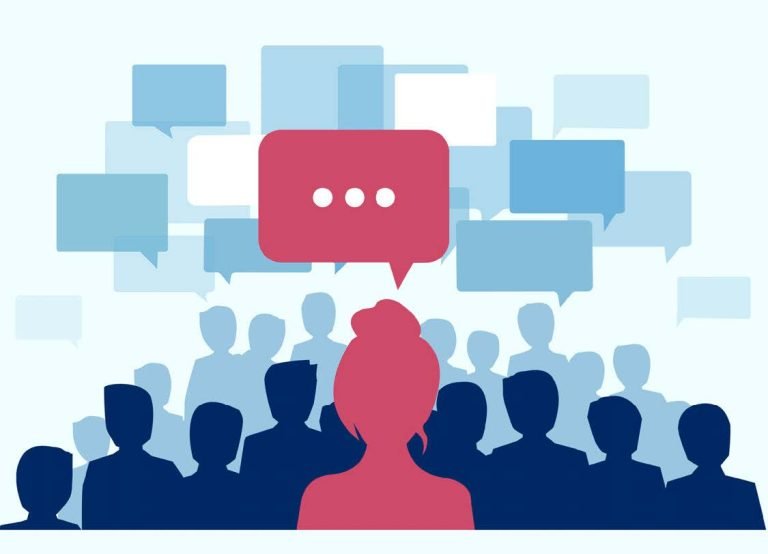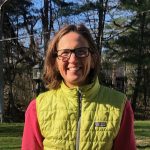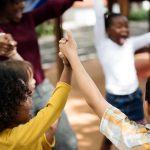By Dr. Carey Borkoski & Dr. Brianne Roos, originally published in Equity & Access
Professional learning (PL) is a required part of most educators’ jobs, and high-quality PL can be engaging, challenging, and lead to positive change for teachers and students (Jensen et al., 2016). Unfortunately, the PL that many teachers experience results in frustration and dissatisfaction. For example, Walker (2016) noted: “the data consistently show us that a big issue is how much voice, how much say, do teachers have collectively in the school-wide decisions that affect their jobs?”
Although teachers are education experts, their PL often does not align with best practices in education. Teachers are looking for concrete strategies and opportunities for coaching, collaboration, and hands-on implementation practice, rather than theoretical ideas presented in single-dose meetings. PL is an $18 billion market with little quality control (Adam et al., 2022), and teachers are unhappy with its current state.
Effective PL includes discussing relevant topics, modeling effective practice, providing coaching and support, and offering opportunities for feedback and reflection overtime (Darling-Hammond et al., 2017). This approach brings PL to teachers in their schools, and offers spaces for community building by focusing on engagement and interaction (Begen, 2022). These ideas reflect adult learning theory, and center around recognizing, honoring, and integrating teachers’ expertise as critical structures and content of PL experiences. A 2022 report recommends increasing teacher “voice and choice” in designing and implementing PL (Adam et al., 2022) and the subsequent discussion explores voice and choice and its potential to center PL around the whole teacher.
Such PL requires collaboratively listening and dialoguing with the diverse voices of participants. This, in turn, supports their agency, freedom, and invitation to fully participate in the experience. Bell hooks writes: “One of the reasons I appreciate people linking the personal with the academic is that I think that the more students recognize their own uniqueness and particularity, the more they listen. So, one of my teaching strategies is to redirect their attention away from my voice to one another’s voices” (hooks, 1994, p. 151). In the spirit of bell hooks, and honoring the worth and contributions of each person, we provide a few elements of PL that invite voice and choice by centering participants.
Centering the whole person begins with intentionally creating space to connect with one another. Connection includes checking in, hearing personal stories, and collaboratively deciding what is needed to engage in the work that day, thereby establishing voice and choice from the very beginning of the time together. Rather than starting with direct instruction, the next phase of the PL invites participant dialogue to check-in about impressions of the PL topics. Noticing and naming participants’ experiences may unearth relevant assumptions and biases. Facilitators then share their expertise and draw connections to participants’ experiences, which offers knowledge, builds trust, and deepens the learning by making it relevant. Aligning PL content with participants’ stories shared earlier in the session makes the participants feel seen and included, and helps to set the conditions for belonging in the space. PL discussions include powerful questions to prompt conversation among participants, allowing space to linger on ideas and emerging reflections, worries, and realizations. Finally, the PL concludes with a debrief, which might include a recap, takeaways, and any remaining questions.
We will offer a few simple practices that model active listening, amplify participants’ voices and experiences, and create community and connection. Consider using the beginning of the PL to set the stage with small-group peer introductions and establishing group norms. Setting the stage establishes community values and expectations for the collaborative learning experience. For example, during a recent PL, we added ideas like openness and curiosity to a shared norms document for everyone to see, and participants added humor, permission to ask questions, and positivity. We connected with one another as people and collaborated to determine our collective values for our time together. At this point in the PL, we had a lot to say about our topic, and could have easily and enthusiastically lectured at our participants for the duration of the session, sharing research, experiences, and our stories. However, bell hooks reminds us: “When I enter the classroom at the beginning of the semester the weight is on me to establish that our purpose is to be, for however brief a time, a community of learners together. It positions me as a learner” (hooks, 1994, p. 153).
Paramount to elevating participants’ voices is the facilitators’ willingness to decenter themselves during the experience. We identify ourselves as learners who welcome multiple voices, and describe our roles as facilitators and collectors. Honoring voice and choice does not mean that facilitators rely exclusively on participants’ input, but that facilitators find opportunities to share and integrate their expertise and perspectives alongside participants. We shared brief connections to research and our practices and a list of resources with related articles, books, and podcasts, and we also invited participants to add to the list. Using powerful questions, our group engaged more deeply with the research by examining beliefs, biases, and assumptions. Groups were encouraged to linger on any of the questions and to enjoy their conversations as they reflect on the research and their experiences. The next step is the debrief, where everyone returns together and participants are asked a few questions, such as what they found surprising about their time together. Participants may share some of their key takeaways from their peers’ stories. Finally, we conclude with gratitude and next steps, asking participants what they were grateful for from the time together, and about something they would like to try based on the PL.
Voice and choice integrated into PL facilitates authentic learning through a climate of belonging, inclusivity, and equity. As facilitators and collectors, our goal is to create a space centered on listening to and valuing participants’ experiences. From participant introductions to sharing and posting in collaborative tech tools, every voice is heard, and diverse perspectives, ideas, and experiences are shared and collected. Belonging happens when facilitators create the conditions for inclusivity to thrive and people in the space feel seen, valued, and trust everyone enough to show up as their authentic selves. Participants are invited to share as much or as little of their experiences as is comfortable, engage in discussion, and contribute to the shared documents in this PL model. The success of the discussions and artifact collection depends on the inclusion of multiple voices. Unlike traditional professional learning, this model of PL aims to create spaces that create opportunities and possibilities for inclusion, discovery, and collective learning. As facilitators, we offer time, space, and minimal structure, and we trust that participants will guide the conversation, activities, and learning in the directions required during our time together. We aim to foster equity by providing space for verbal and written contribution, in pairs, small groups, and large groups, and with varied prompts for discussion and participation. From the introductions to the debrief, the experiences and contributions of each participant are centered and valued in the voice and choice PL model.
References
Adam, T., Gagnier, K. M., Brizzo, A. (2022). Teacher-Directed Professional Learning. Cross-project summary produced by AnLar and the Office of Elementary and Secondary Education; Education, Innovation, and Research Program (EIR). https://oese.ed.gov/files/2022/07/EIR_Teacher-Directed-Professional-Learning-Opportunities-Challenges-and-Solutions_FINAL.pdf
Begen, K. (2022, September 26). We need to fix professional development for teachers. EdSource. https://edsource.org/2022/we-need-to-fix-professional-development-for-teachers/678632
Darling-Hammond, L., Hyler, M. E., & Gardner, M. (with Espinoza, D.). (2017). Effective teacher professional development. Palo Alto, CA: Learning Policy Institute. Retrieved from https://learningpolicyinstitute.org/product/teacher-prof-dev
Hooks, B. (1994). Teaching to transgress: Education as the practice of freedom. Routledge.
Jensen, B., Sonnemann, J., Roberts-Hull, K., & Hunter, A. (2016). Beyond PD: Teacher professional learning in high-performing systems. National Center on Education and the Economy. http://www.ncee.org/wp-content/uploads/2015/08/BeyondPDWeb.pdf
Walker, T. (2016, January 11). Teacher autonomy declined over past decade, new data shows. NEA Today. https://www.nea.org/advocating-for-change/new-from-nea/teacher-autonomy-declined-over-past-decade-new-data-shows
Dr. Carey Borkoski is an Associate Professor at Johns Hopkins University where she holds a joint faculty appointment with the School of Education and the Bloomberg School of Public Health. Within the School of Education, she teaches research methods and advises doctoral students in the online EdD program. Her research explores the role of communities, bridging media like podcasts and TedTalks, and storytelling in facilitating student onboarding, promoting deeper learning, and mitigating anxiety around learning and engaging in often unfamiliar academic spaces. Connect with her at momentmcoaching.com
Dr. Brianne Roos is an Assistant Professor and director of the undergraduate program in the Department of Speech-Language-Hearing Sciences at Loyola University Maryland. Her career began as a clinician practicing medical speech-language pathology in hospital settings, where her favorite days were spent teaching and supervising students and new clinicians. She has been teaching in higher education for over 15 years and her areas of research include belonging, stress, well-being, and connection for students and faculty. Brianne facilitates workshops about teaching and learning for faculty across disciplines and she particularly enjoys the opportunity to develop and implement holistic onboarding programming to support new faculty. Brianne co-hosts a podcast about belonging, where she learns from a diverse range of guests and whose data contribute to research about belonging during the pandemic, in leadership, and in relationships. Always looking for alignment across established high-impact practices and innovative, engaged pedagogy, Brianne’s publications, presentations, podcasts, and classroom practices connect theoretical support with application that centers the whole person.
-
Dr. Brianne Rooshttps://ace-ed.org/author/broos/July 7, 2024
-
Dr. Brianne Rooshttps://ace-ed.org/author/broos/
-
Dr. Brianne Rooshttps://ace-ed.org/author/broos/February 27, 2023
-
Dr. Brianne Rooshttps://ace-ed.org/author/broos/November 18, 2022








